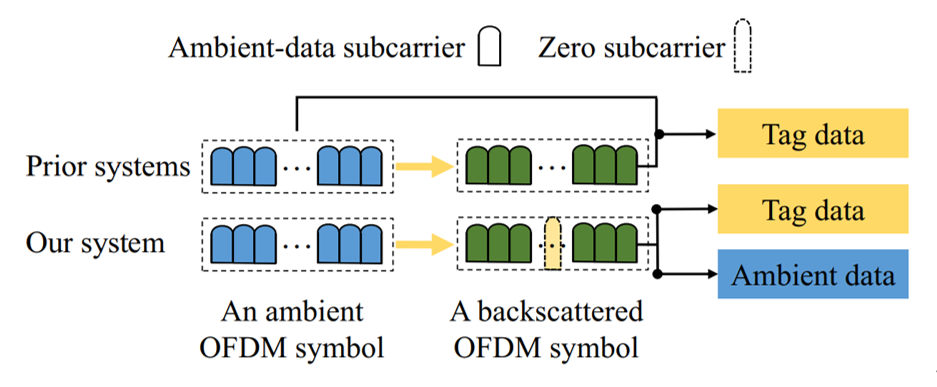UBIoT paper: Content-Agnostic Backscatter from Thin Air was officially received by ACM MobiSys2022.
The 20th ACM International Conference on Mobile Systems, Applications, The 20th ACM International Conference on Mobile Systems, Applications, and Services) in Portland from June 27 to July 1, 2022. The conference is one of the top international conferences in the field of mobile computing and wireless systems.
Here is a brief introduction to the paper:
Thesis title: Content-Agnostic Backscatter from Thin Air
Authors: Yang Yifan, Yuan Longzhi, Zhao Jia, Gong Wei
Summary of the paper content:
Ambient backscattering technology is expected to provide ultra-low power wireless communication for billions of microcomputing devices. Unlike traditional RFID technology, ambient backscatter technology can use universal wireless protocol (such as WiFi, Bluetooth) signal as the excitation source. One of the key characteristics of environmental backscattering systems is that the excitation signal and the receiver are separated, so the environmental signal used for excitation is not controlled. Finding reference signals in uncontrolled environmental excitation signals is a challenge. To solve this problem, existing environmental backscattering systems are content known, they first use additional receivers to obtain the environmental signal data, and use this as a reference signal to demodulate the label data. This method has the following defects: 1) Label data demodulation completely depends on the quality of environmental data; 2) Need two independent receiver demodulation label data, channel bandwidth utilization is insufficient; 3) The need for additional receivers leads to high system deployment costs and low practicability. To solve these problems, an environment backscattering system with unknown contents is proposed. The system innovatively uses the virtual 0 subcarrier in OFDM WiFi signal as the reference signal, which fully fills the defects of the existing system.

In this paper, a method of modulating label data on 0 subcarrier is proposed. This paper proposes a series of solutions to the errors caused by label data demodulation, such as separation of CPE and symbol recombination. Secondly, a method of demodulation of environmental data in backscattered signals is proposed. In addition, in order to achieve accurate synchronization between tags and excitation signals, a subsymbolic level synchronization method is proposed.
Experiments show that this system can be applied to all OFDM WiFi, including WiFi3/4/5/6. When multi-stream, 40 MHz WiFi6 signal is used as excitation, the system aggregate throughput is 340.9Mbps, reaching 97% Shannon capacity. The maximum tag data throughput of this system is 1 Mbps, and the performance is improved 269.7 times compared with the latest content unknown environment backscatter system FS-backscatter.
